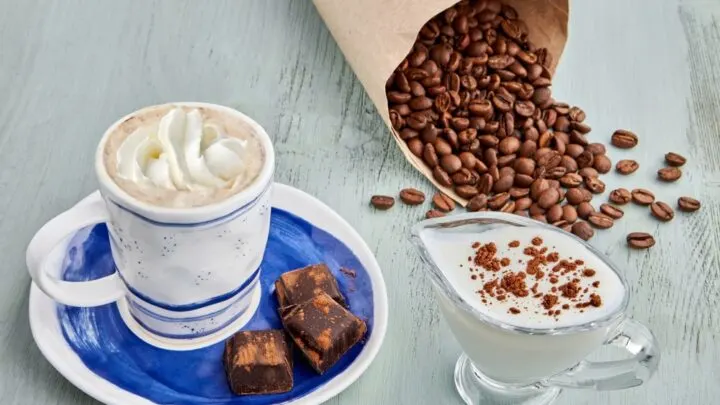Table of Contents
France may be well known for many things, but arguably their rich food and drink culture is the most notable of them all. Particularly, the French coffee culture.
But, how do they drink their coffee in France? The French people love coffee with a passion, and they are responsible for a lot of how coffee is perceived nowadays. They are, in fact, one of the biggest consumers of coffee in the world.
If you’re planning a trip to France anytime soon, or even if you just want to drink coffee like the French do, then this guide is for you.
But first…,
Let’s take a look at the history of coffee in France:
History of Coffee in France
Coffee was not well-received in France at first. This was actually not a surprise; coffee would be met with the same suspicion in other cultures, like in the Ottoman Empire first, where it was briefly banned under penalty of death. In Sweden, King Gustav would also try to ban the beverage—to no avail.
In the 17th century, when coffee first arrived in Europe, it met strong resistance from the Catholic church. Many called it the “devil’s drink” which, again, it’d been called exactly that by the Muslim church. However the drink was presented to Pope Clement VIII, supposedly so he would condemn it publicly once and for all.
Funnily enough, he said:
“The devil’s drink is so delicious that we shall trick the devil by baptizing it!”.
The Devil’s Drink: How the Pope Cheated Hell by “Baptizing” Coffee
And thus, coffee was okay to drink. Soon after, the first coffee house of France was opened.
From then, coffee found a place in the hearts of the French people.
Many notable people throughout history have declared their love for coffee; none other than Napoleon Bonaparte was an avid coffee drinker by all accounts, and it is said that he asked for a cup of coffee on his deathbed: “I’d rather suffer with coffee than be senseless”.
But perhaps more interesting are French writers and their disproportionate interest in this beverage. The writer Honoré de Balzac was reported to own his very own coffee house size coffee maker, which at the time would cost a small fortune—and he was said to drink between 15 and 40 cups of coffee a day.
Voltaire, too, was said to love coffee in a similar way. On one occasion he was visiting Paris and the following was written about his night out dining:
“He dined in Paris that night at a coffee-house, with a few other literary men. He arrived rather late. He had come straight from Versailles, and alone of the company knew what had occurred there. He made his dinner, after his frugal fashion, off seven or eight cups of black coffee and a couple of rolls, and was very talkative and amusing.”
The Life of Voltaire
By Stephen G. Tallentyre
The French Press

Whenever you think of France and coffee—or French coffee—, you probably immediately think of the French press. Let’s learn more about this brewing method:
The French press is subject to some heated debate in the coffee community—is it really French or, in fact, Italian? The details are unclear. An invention was patented around 1852 which showcases a device very similar which works just like today’s French press.
However, it was an Italian that would later patent another device which some say is just an enhanced version of the previous, French, one.
And while we call it a “French press”, in France it is simply called a “coffee maker”: cafetière. Or Cafetière à piston, the full name. They call it a cafetière in Britain and Ireland, too, and it has different names around the world like “coffee press”, or “coffee plunger”.
Drinking Coffee in France
First, we’ll look at what type of coffee to drink in France—what to order and how. Then, we’ll see when people in France drink coffee.
Espresso
There is a notion that European—and French people in particular—drink espresso straight, as it is, no sugar, no cream. This is not true!
However it is true that French people like their coffee stronger. Not for nothing it is called a French roast, this is a dark roast that tastes stronger and more bitter and is the most popular roast in France.
In contrast, light and medium roasts are the preferred ones in America.
Café noisette
Overwhelmingly the most popular coffee served in France, the café noisette is made with one or two shots of espresso with just a dash of milk foam. It’s very much like a macchiato and exactly like a Spanish cortado.
The word noisette actually means hazelnut, which refers to the pretty brown color that forms when the milk foam mixes with the coffee.
The café noisette is incredibly popular in France.
Café crème
Otherwise known as cappuccino—though French people don’t like the association. Some claim that this was actually created in France, then rebranded by the Italian. Others say that café crème is a completely different drink.
It is not, in fact. But if you order a cappuccino anywhere that’s not a Starbucks in France, you probably won’t get served!
Café viennois

Vienna was, at one point, the coffee capital of Europe. Café viennois is a recipe that’s more than a century old, and has become even more popular with the creation of espresso.
It is made using hot chocolate and espresso, then topped with plenty of whipped cream. Either cocoa powder or chocolate shavings are used as garnish.
Café viennois is seen largely as a winter-time beverage to fight cold temperatures with something hot and sweet. Some regions use liquor as an extra, spicy ingredient.
Café gourmand
When you order a coffee in France, you’re not just getting coffee. The tradition is to serve coffee with a small food item; usually, this is a small piece of dark chocolate or butter cookies. These come in small individual packages—the practice is so widespread that entire companies are dedicated to it.
Coffee must always be accompanied by a cookie, a piece of chocolate, or a small pastry.
Café gourmand takes this to another level: it is coffee with an assortment of different desserts or sweet foods. The most common items are sweet croissants with chocolate syrup, muffins with fondant filling, and the obligatory fruit-based dessert—which is almost always apple.
The café gourmand is the kind of order to have mid-morning or mid-evening when you’ve either not had breakfast or lunch yet and need to power through.
The idea is to sip on black coffee, then follow it with a bite of something sweet. The sweetness is intensified by the bitterness of coffee, and vice versa.
When to drink coffee in France
French people drink coffee at all times of the day. If you think Americans drink coffee all day, you have no idea what’s coming to you.
For starters, French coffee culture isn’t so much about drinking coffee at home first thing or getting coffee to-go on your way to work: black coffee isn’t widespread, and neither is to-go coffee. At least not as widespread as it is in America.
Instead, people have their coffee mid-morning, usually at their nearest café. They will sit down and have their coffee—usually accompanied by whatever the café is serving with it (chocolate, cookies, etc.) or a small pastry. The coffee is usually a café noisette.
Then, they will have a cup or two of coffee right after lunch. After that, it all depends on the person, but coffee is typically had mid-evening and then many drink a coffee early at night or with dinner.
French coffee, you’ll find, happens more often because their coffees are smaller. They don’t drink as many lattes or frappuccinos which are much bigger, which leaves space for more delicious, strong coffee.
The biggest difference between French coffee culture and American coffee culture is mainly that American coffee culture is coffee-oriented.
This means that the culture centers about coffee itself – preparing it and drinking it. Barista is a highly regarded profession, which reflects how much importance we place on coffee itself.
The French aren’t so obsessed about these aspects of coffee – they relish the occasion more. It is café-oriented, in the way that the idea is to gather at a café to enjoy coffee together.
The idea is to go out, catch up over some good coffee, and that’s it. The emphasis is not on coffee, but the whole experience.
This is probably also true of many other European countries with a few exceptions (mainly Britain, Ireland, and Scotland) where coffee has been an opportunity for social occasions for centuries. Coffee is a social drink that is meant to be enjoyed with other people.
This is also why to-go coffee isn’t as popular in France: it ruins the chance for a good social occasion.
Conclusion
Coffee in France is an important part of the culture and the social scene. It’s not just about drinking coffee, but enjoying it with other people. The French take their coffee seriously, and there are many different ways to enjoy it. From simple black coffee to café gourmand, there’s a coffee for every occasion.
Next time you’re in France, make sure to enjoy a cup of coffee the way the French do. Who knows, you might even find your new favorite way to drink coffee!

